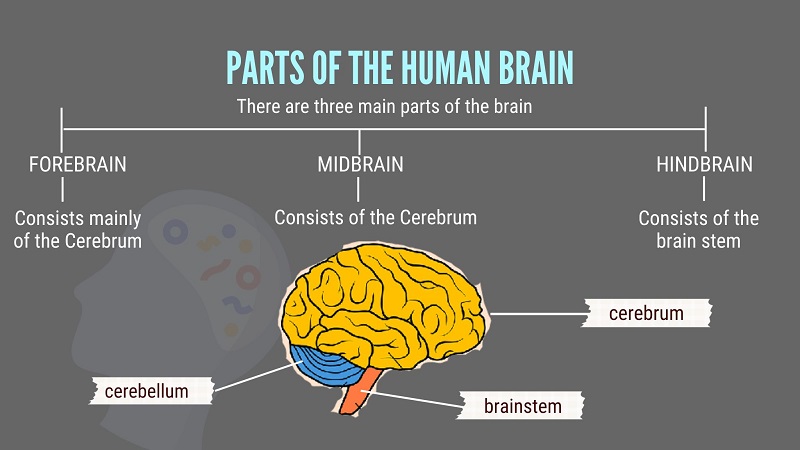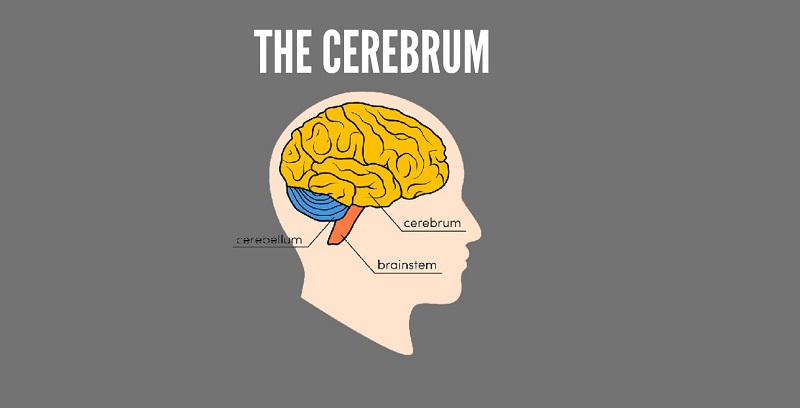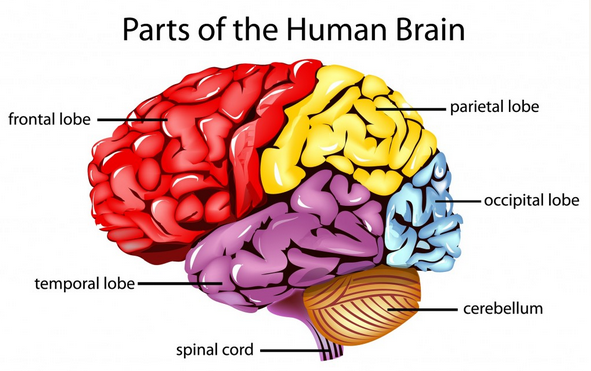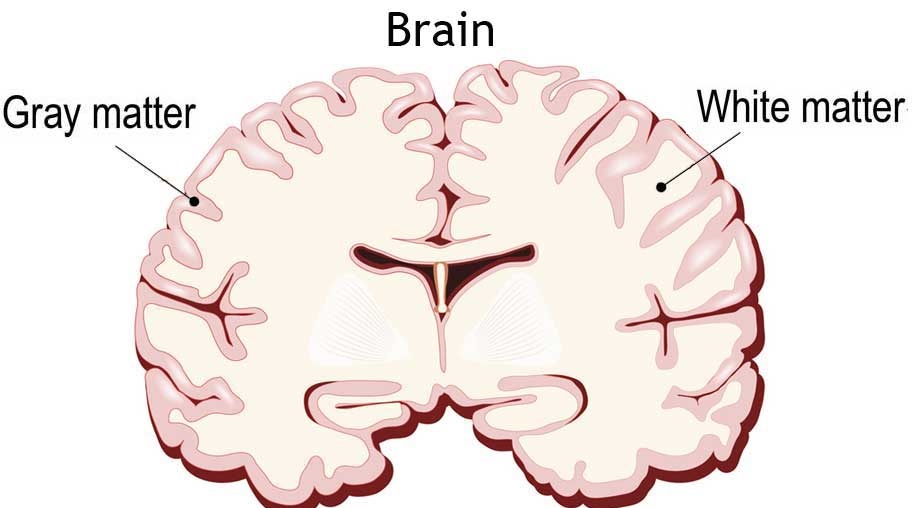Fun Facts About the Human Brain
Written by Aindrila Jana, a third-year undergraduate student
Is the brain a muscle? Find out…
Written by Aindrila Jana, a third-year undergraduate student
The human brain controls almost everything in your body – from your thoughts and your feelings to anything you do physically. Apart from enabling humans to think and experience emotions, the brain also regulates vital functions like our breathing rhythm, blood pressure, and heartbeat and controls eye movements and facial expressions.
We look at all that the brain does in this article.
But first, let’s bust this myth..


It is a popular belief that the brain is a muscle – the fact about the brain is that, in itself, the brain is not a muscle, it is an organ. But, it plays a big part in controlling muscles in your body and consists of blood vessels and nerves.
How does the brain work?
It sends and receives signals to different parts of your body via, what are called, neurons.
Can you guess how many neurons there are in a human brain?
86 billion!
That’s a super fun fact about the brain!
Tell me more about neurons.
Neurons are nerve cells that carry “messages” in and out of your brain. For example, if you are hungry – your stomach will send a signal to your brain through the neurons that you are hungry and that’s when you will realise you want to eat!
Right now, your brain is processing what you are reading.
Structure of the human brain
The brain has a soft and delicate structure. It has a wrinkled surface and is well protected by the bony skull. The skull comprises two sets of bones – cranial and facial.
- The cranial bones are 8 in number and form the hard protective outer covering.
- The facial bones are 14 in number and form the front part of the skull.
Cranial meninges (layers).
Inside the skull, the brain is covered by three protective layers which are known as cranial meninges.
1. Duramater: This is the hard and tough outer layer that protects the brain and also the spinal cord. It’s made of fibrous tissue.
2. Arachnoid: This is the middle membrane (or layer) of the brain. This part looks like a spider web and is filled with fluid that cushions the brain. It gets its name from arachnid – a class of joint-legged invertebrate animals, like spiders.
3. Piamater: It is the inner meninx (or membrane), that is in contact with the brain tissue and comprises connective tissue – it basically clings tightly to the brain. It is a thin and highly vascular layer -meaning that it has many blood vessels.
What’s between these layers?
There are slight spaces – here’s what these spaces are called:
Subdural space: A very narrow space that exists below the dura mater or between the dura mater and the arachnoid membrane is called the subdural space.
Subarachnoid space: A narrow space that exists below the arachnoid membrane or between the arachnoid membrane and pia mater is called subarachnoid space. It contains CerebroSpinal Fluid (CSF).
Parts of the Brain

To understand the basic structure of the human brain, you can divide it into three large parts: The Forebrain, The Midbrain, and The Hindbrain (also called the Brain Stem)
The Forebrain
The front portion of the brain or forebrain forms the largest and major part of the brain.
It consists of:
The Cerebrum
The Hypothalamus
The Thalamus
The Cerebrum
The most prominent portion of the forebrain, the Cerebrum makes up the largest part of the brain. This is really a super important part of the brain.

The cerebrum comprises grey matter, also called the cerebral cortex, and white matter.
What does the Cerebrum do?
It does a lot – from coordinating movement to regulating body temperature to enabling speech, helping us learn, think, reason, solve problems etc. That’s not all. The Cerebrum is also responsible for our emotions and senses like vision, hearing, and touch.
The cerebrum is divided into four sections, called lobes. These are:

via Wikimedia Commons
The Frontal lobe – This is the largest part and is responsible for things like memory, creativity, parts of speech, problem-solving, motor tasks, movements, etc.
The Parietal lobe: These are located near the back and towards the top of the head. They help in processing everything to do with touch and senses – if you touch something, it is this part of the brain that tells you what it is. It also tells us about the movement of our body parts
The Occipital lobe: This helps us in processing visuals around us.
The Temporal lobe: This is the second-largest lobe and helps us in processing auditory (sounds) information, and also with the recognition of memory
The Thalamus
The cerebrum wraps around a structure called the thalamus, which is the relay center of the cerebral cortex. It acts as a major coordinating center for sensory and motor signaling.
The Hypothalamus
The hypothalamus contains a number of centers that control body temperature, the urge for eating and drinking, rage, anger, fear, etc. It keeps the body temperature at around 37 degrees Celsius and controls thirst and hunger.
The Midbrain
Present between the forebrain and the hindbrain, this part helps in coordinating the movement of the head and the eye and focuses on an object. It is also responsible for auditory reflexes.
The Hindbrain (also called the Brainstem)
This is the posteriormost part of the brain and comprises the pons, cerebellum, and medulla oblongata. It coordinates those functions that are fundamental to survival, which includes respiratory rhythm, motor activity, and sleeping, and waking patterns.
The Cerebellum
The Cerebellum is the second largest part of the brain after the cerebrum. The word “cerebellum” basically means “little cerebrum”.
The cerebellum is made up of two cerebellar hemispheres and has grey matter on the outer side and white matter on the inner side. The cerebellum modulates or reorganizes motor commands. Its most important function seems to be coordinating the locomotor activity of the body which is initiated by the impulses arising in the motor area of the forebrain. It is also responsible for maintaining the balance of the body.
The Medulla oblongata
The Medulla oblongata has a respiratory rhythm center to maintain the respiratory rhythm to suit the functions of the body. The gastric secretions are under the neural control of the medulla. It also helps in controlling vital processes like our heartbeat, breathing, and blood pressure.
The Grey matter and the white matter
Grey and white matter are what the central nervous system is mainly made of. In the brain, grey matter is the darker, outer portion, while white matter is the inner, whiter part.

Both the white and the grey matter are important parts of the brain and the spinal cord. The former is mainly responsible for processing and interpreting information, while the latter is what transmits information to different parts of the nervous system.
Now for some fun facts about the brain!
Top 20 Fun Facts About the human brain In 2022
1. Human brain and heart combined are made up of 73% water. This is why, only 2% of dehydration affects your attention span, memory power, and other cognitive skills. Also, it is said that sweating for 1.5 hours without replenishing of fluids can temporarily shrink the brain as much as one year of aging can do.
2. Our brain is the fattiest organ in the body as 60% of its dry weight is composed of fat. The human brain weighs about 3 pounds.
3. 95 percent of all decisions we make are formed in the subconscious part of our brain. This means – the majority of our behaviours and actions are caused due to brain activities that happen beyond our active consciousness.
4. Our brain needs a constant supply of oxygen. Going just five minutes without oxygen causes some brain cells to die, leading to severe brain damage.
5. Brain development begins from the back of the brain and works its way to the front. Our brain reaches complete maturity at the age of 25.
6. The storage capacity of the brain is virtually unlimited. Neurons, the fundamental working units of the brain, are specialized cells in our brain that transmit information and communicate with other cells. They combine and increase the storage capacity of our brains.
7. The brain is super fast – faster than a super-fast train! Brain information travels at the speed of 268 miles per hour (that’s about 430 km an hour!).
8. The human brain comprises about 86 billion neurons. Each neuron is connected to many other neurons and these form up to 1000 trillion connections! More than 100,000 chemical reactions take place in the brain each second.
9. Our brains generate a wide range of thoughts every day. It’s estimated that the average brain generates about 48.6 thoughts per minute. So on adding up, the human brain generates a total of 70,000 thoughts per day.
10. Around 750-1,000 milliliters of blood flows through the brain each minute.
11. Men’s brains are around 10% bigger in size than women’s brains in general. But the hippocampus, the part of the brain involved in storing memories, is typically larger in women than men.
12. The brains of Neanderthals – extinct species or subspecies of humans – were 10% larger than those of Homo sapiens (humans).
13. Depression and chronic stress patterns which are highly prevalent in modern life are likely to cause measurable brain shrinkage.
14. To ward off starvation, brain cells literally cannibalize themselves as the last available source of energy. That means extreme dieting habits can force the brain to eat itself.
15. Cholesterol (a fat-like substance) forms a large part of each brain cell. 25% of the body’s cholesterol is present within the brain. Brain cells die in the absence of adequate cholesterol.
16. Heads of babies are bigger in size to hold their rapidly growing brains. The human brain grows thrice its size in the first year of life. But sometime after middle age, the human brain gets smaller in size as we become older.
17. About 20 watts of electricity are generated in the human brain. This amount of electricity has enough power to light up a couple of low-wattage LED bulbs.
18. The brain can process an image that the eyes have seen in about 13 milliseconds, taking lesser time than it takes for us to blink.
19. The weight of Albert Einstein’s brain was 2.71 pounds, that is, 10% less than the average brain weight of 3 pounds. But the neuron density of his brain was greater than the average neuron density of the human brain.
20. Learning new things visibly increases the grey matter in our brains. Similarly, emotions drastically can alter our brain chemistry.
What is so unique about the human brain?
The human brain has unique abilities and is more powerful than we can ever imagine. An eminent scientist once said that our brain is “the most complex thing we have yet discovered in our universe”.
The human brain is faster and more powerful than a supercomputer. The energy consumption of the human brain is less than that of a computer, hence it is over ten times more energy-efficient than computers. Also, the average adult human brain can hold about 2.5 million gigabytes of information, that is the storage capacity of the human brain is much more than what a modern single computer can hold.
The human brain sends and receives chemical and electrical signals all throughout the body. It processes information that it receives from the sense organs and sends messages back to the body. This is basically how the human brain works
Functions of the human brain
A. Voluntary movements
All those movements which are under the voluntary control of the body and are performed at the will of the organism are called voluntary movements. Walking, running, and talking are all voluntary activities. They are controlled by the brain.
B. Functioning of the vital involuntary organs
The functions of the involuntary organs like the heart, kidney, lungs, liver, etc, are controlled by the brain. Heartbeat, digestion of food, excretion, gametogenesis, etc, are all controlled by the human brain.
C. Thermoregulation
The control of the body temperature is called thermoregulation. The outer environmental conditions keep on changing but the internal body temperature is maintained at a constant level, i.e. 37°C. This is under the control of the human brain.
D.Circadian Rhythm of our body
Our body maintains its 24-hour rhythm of sleeping, waking, feeling hungry, etc. This rhythm is called the circadian rhythm of the body and is under the control of the brain.
E. Activities of the Endocrine Glands
The ductless or endocrine glands are also controlled by the brain. Some hormones like growth hormone, oxytocin, and luteinizing hormone are secreted by the brain itself. However, other endocrine glands like the thyroid gland, adrenal gland, and parathyroid gland are also under the direct control of the brain.
The human brain is also the site for processing various sensations like vision, hearing, smell, taste, etc. It is also responsible for controlling the balance of the body which is required in static and dynamic activities.
Weirdest facts about the human brain
Some of the weirdest facts about the human brain that’ll blow your mind are enlisted below
1. The size of the human brain has shrunk over time.
Paleoanthropologist John Hawks at the University of Wisconsin at Madison states, “We do know from archaeological data that pretty much everywhere we can measure — Europe, China, South Africa, Australia — that brains have shrunk about 150 cubic centimeters, off a mean of about 1,350. That’s roughly 10%.”
2. The brains of some people have developed without the cerebellum and they didn’t have any idea about this!
The term for this rare condition is called cerebellum agenesis and has been discovered in a few patients.
3. The myth that we only use 10% of our brains is false. Rather, we only understand about 10% of how our brain functions.
4. The brain anticipates our own touch hence we cannot tickle ourselves. It cancels out the pressure we apply.
5. A brain freeze may occur when we eat something cold very quickly. It is scientifically known as “sphenopalatine ganglioneuralgia”. It is considered to be a type of headache, also called an ice cream headache as it is a cold-induced headache.
Hope you got to know all about the brain! It is a complex thing and there’s a lot more to the brain than stated here – but this will serve as a great introduction and give you an overall picture.

Better Your Child’s G.K. In 3 Minutes – Get This Free Newsletter
Get fun facts, simple and easy news, quizzes, and lots of other interesting things to read in your mailbox – for free! It’s what we call GK-on-the-go!
I Kid You Not now has a large readership across India and also parts of the world. If you want to write for us, you can submit your story here. You can also apply to become a news anchor. Apply here
Also Read:
ISRO’s Space Programmes for 2023
Fun Facts About Saturn to Know
What’s ChatGPT?



Comments